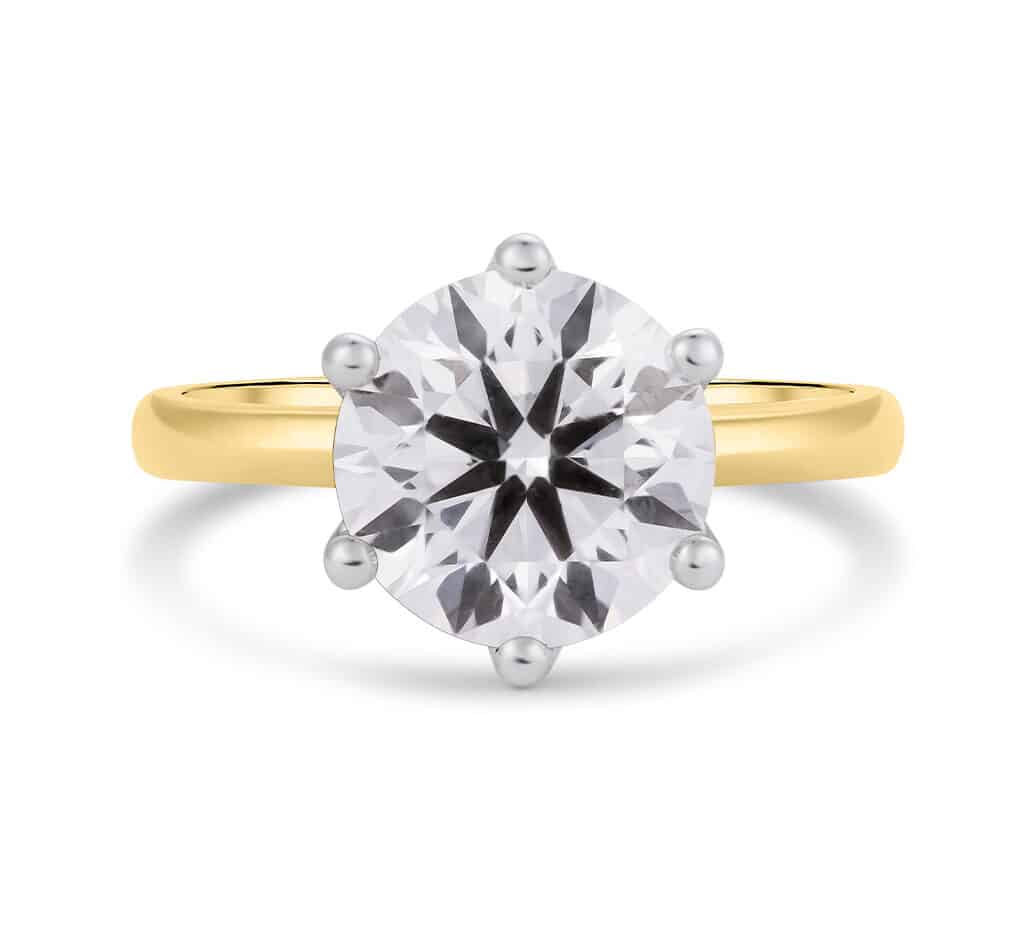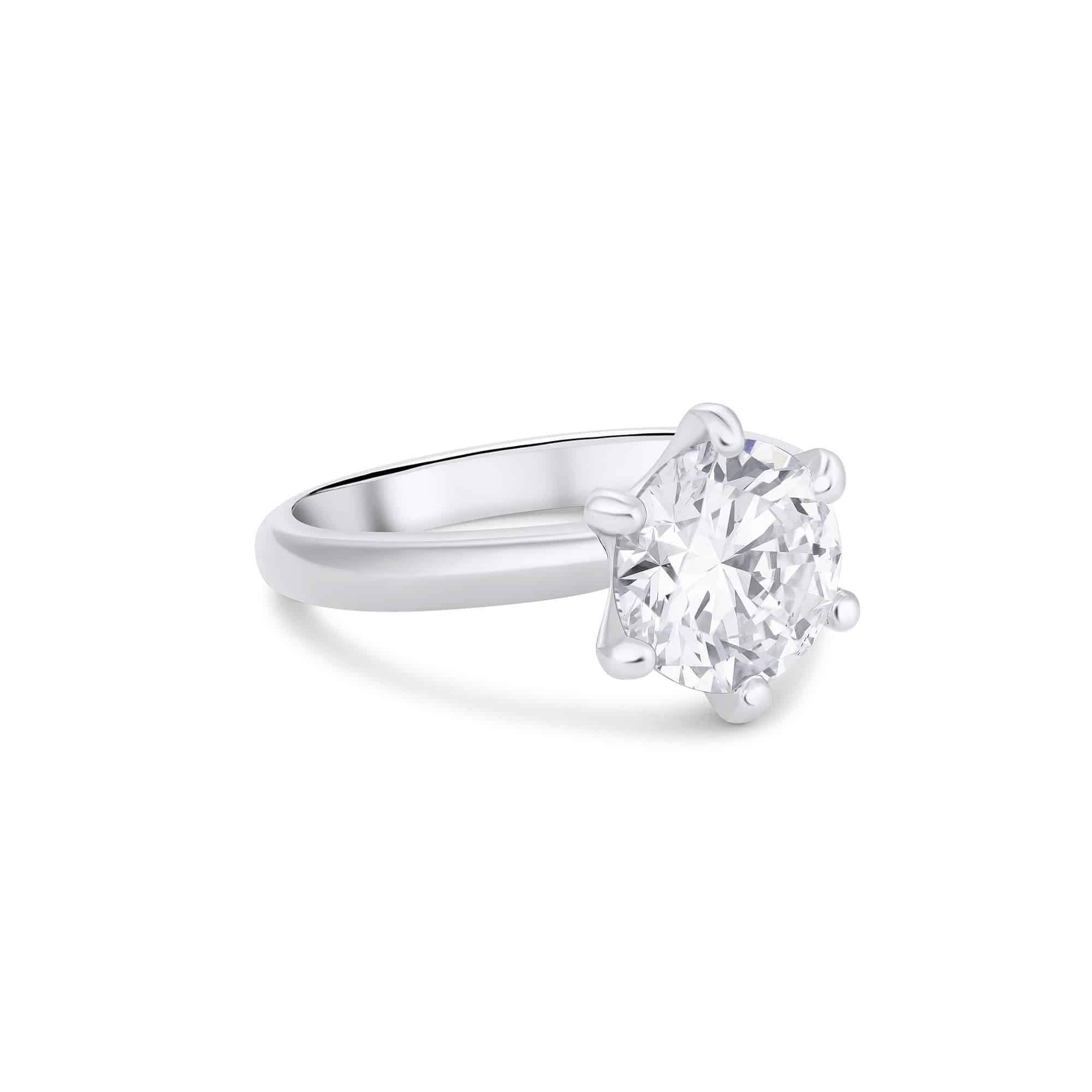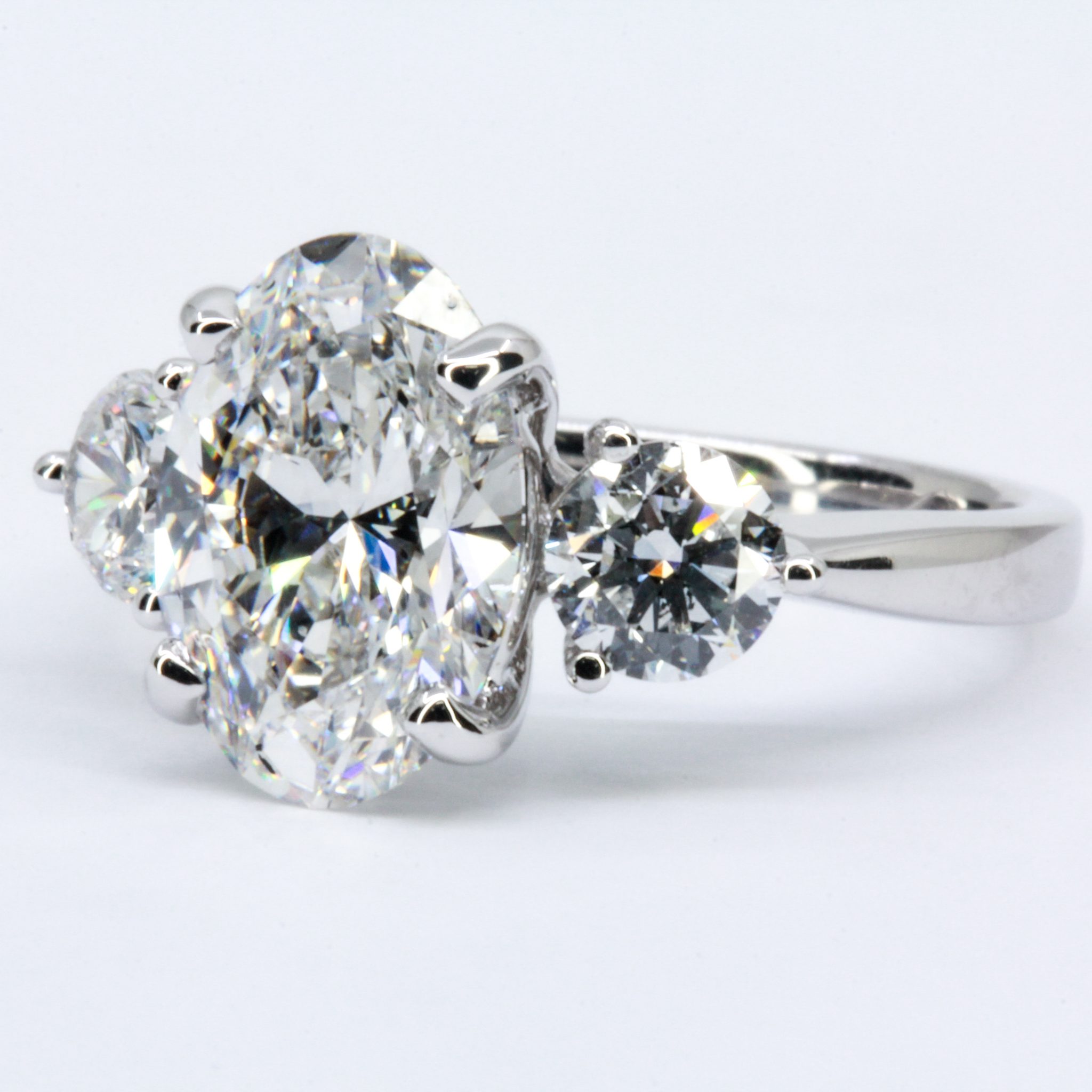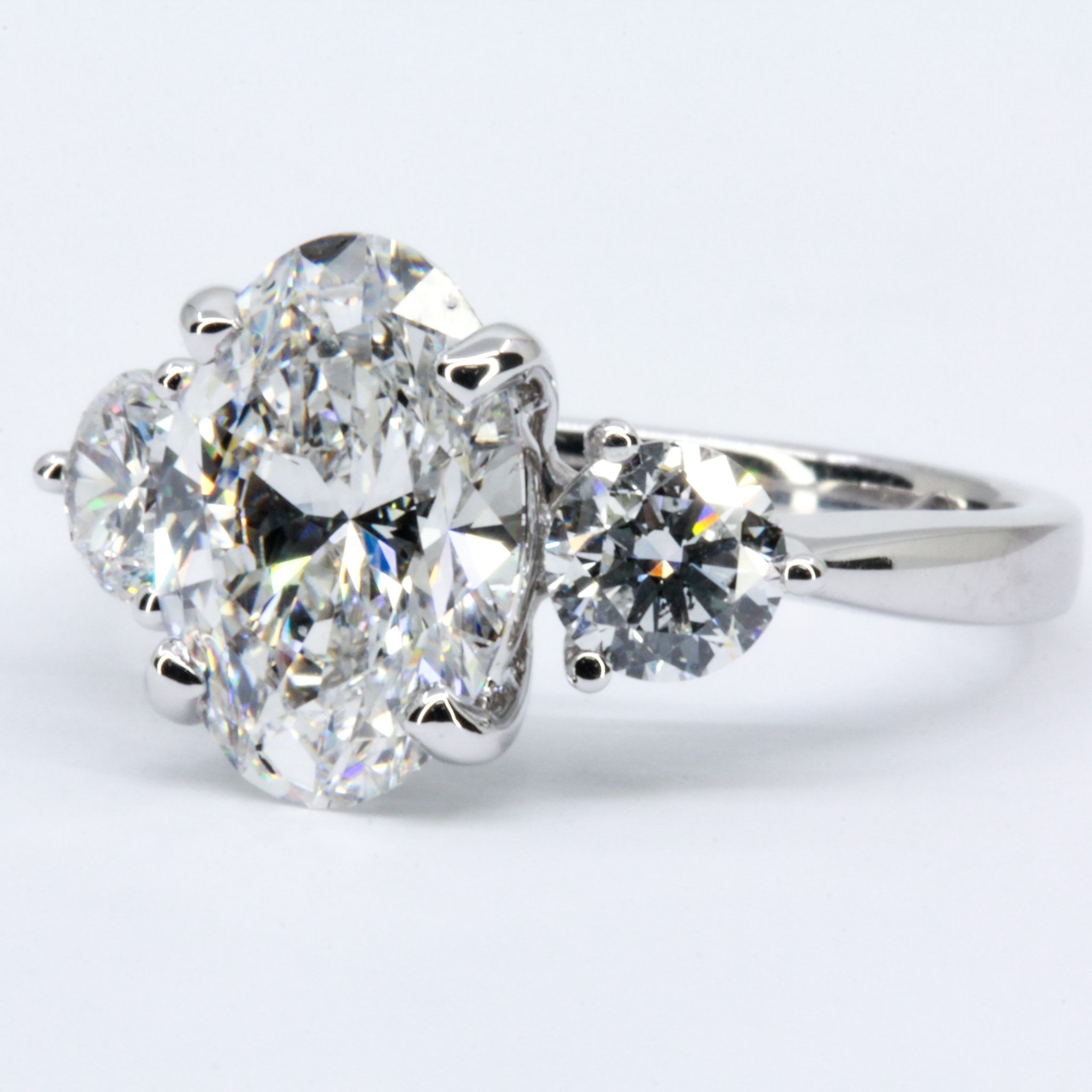buy lab grown diamond ring is the perfect choice for anyone seeking beauty, value, and a conscious approach to fine jewelry. In today’s world, more couples and individuals are turning to lab grown diamonds for their exceptional sparkle, ethical origins, and innovative designs that stand out from traditional options.
Lab grown diamonds are created using advanced technology, resulting in stones that are chemically and physically identical to natural diamonds. They offer a responsible alternative to mined diamonds, often at a more accessible price point, without sacrificing quality or brilliance. As you explore the process, advantages, and shopping tips for lab grown diamond rings, you’ll discover just how easy it is to find a ring that matches your values and style.
Introduction to Lab Grown Diamond Rings
Lab grown diamond rings have transformed the jewelry landscape by offering the brilliance and beauty of diamonds created through cutting-edge technology. Unlike their mined counterparts, these diamonds are engineered in highly controlled laboratory environments, replicating the natural diamond formation process, atom by atom. The result is a gemstone that is optically, physically, and chemically identical to natural diamonds.
Lab grown diamonds differ from natural diamonds primarily in their origin. While natural diamonds form under extreme conditions in the Earth’s mantle over billions of years, lab grown diamonds are produced within weeks using advanced scientific methods. This innovation is a game changer, offering consumers a more transparent and sustainable choice. The rising popularity of lab grown diamond rings is fueled by a desire for ethical sourcing, environmental consciousness, and excellent value without sacrificing luxury or style.
Main Differences Between Lab Grown and Natural Diamonds
Understanding the distinctions between these two types of diamonds is crucial for anyone considering a diamond purchase. Lab grown diamonds are cultivated in a setting where every variable is monitored, resulting in fewer impurities and consistent quality. In contrast, natural diamonds may feature unique inclusions and variances due to their geological formation. Additionally, lab grown diamonds are generally more affordable, providing larger stones or higher quality for the same budget.
Reasons Behind the Rising Popularity of Lab Grown Diamond Rings
Recently, more buyers are turning to lab grown diamond rings for several compelling reasons:
- They deliver identical sparkle and durability as mined diamonds.
- They address growing concerns about ethical and conflict-free sourcing.
- Their production has a lower environmental impact compared to traditional mining.
- They often come at a more accessible price point, allowing for greater customization.
Advantages of Choosing Lab Grown Diamond Rings
Opting for a lab grown diamond ring offers a host of benefits that align with ethical, environmental, and financial values. These stones present a modern alternative that appeals to individuals seeking transparency in origin and production, without compromising on brilliance or quality.
Ethical and Environmental Benefits
Choosing a lab grown diamond contributes to responsible consumption. Traditional diamond mining is often associated with environmental degradation and, in some cases, unethical labor practices. Lab grown diamonds are produced in settings designed to minimize ecological impact, with strict human rights standards. This elevates their appeal among conscious consumers.
Cost Comparison: Lab Grown vs. Mined Diamond Rings
Lab grown diamonds not only offer ethical benefits but are also more budget-friendly. Here’s a comparison highlighting typical price differences and sources:
| Carat | Type | Average Price | Source |
|---|---|---|---|
| 1.0 | Lab Grown | $1,000 – $2,000 | Laboratory |
| 1.0 | Natural | $4,000 – $7,000 | Mined |
| 2.0 | Lab Grown | $3,000 – $5,000 | Laboratory |
| 2.0 | Natural | $15,000 – $25,000 | Mined |
Consistency and Quality Control
Lab grown diamond production allows for rigorous quality control, resulting in gems with consistent grading and fewer flaws. The conditions in laboratories are precisely managed, reducing the risk of inclusions or inconsistencies. This makes it easier for buyers to find stones that meet their specific preferences for clarity and color, often at a better value than natural equivalents.
How Lab Grown Diamonds are Made
The creation of lab grown diamonds is a marvel of science and technology. Two primary methods dominate the industry: Chemical Vapor Deposition (CVD) and High Pressure High Temperature (HPHT). Each process replicates the natural diamond’s formation, but in an accelerated and controlled environment.
Chemical Vapor Deposition (CVD) and High Pressure High Temperature (HPHT) Methods
CVD involves placing a diamond seed in a sealed chamber and introducing a carbon-rich gas. With the application of energy, carbon atoms separate from the gas and accumulate on the seed, gradually building a diamond layer by layer. HPHT mimics the natural conditions deep within the Earth by applying intense pressure and heat to carbon, causing it to crystallize into a diamond.
Key Steps in Laboratory Diamond Creation
Here’s a simplified summary of the laboratory diamond creation process:
- The process starts with a small diamond seed.
- For CVD, the seed is placed in a chamber filled with methane and hydrogen gases.
- Energy is applied, breaking down the gases and allowing carbon atoms to bond to the seed.
- In HPHT, carbon is subjected to high temperatures and pressure, causing crystallization.
- The rough diamond is removed, cut, and polished to reveal its brilliance.
Technological Advancements in Diamond Creation
Today’s lab grown diamonds benefit from continuous technological progress. Advanced machinery can simulate Earth’s natural forces with remarkable precision, producing diamonds in a matter of weeks that are virtually indistinguishable from those formed over millennia. Innovations in gas composition control, chamber design, and monitoring systems ensure that each diamond attains optimal clarity, color, and hardness. This technological edge contributes to the consistent quality and expanding range of lab grown diamonds available to buyers.
Factors to Consider Before Buying a Lab Grown Diamond Ring
Making an informed decision when purchasing a lab grown diamond ring involves evaluating several important characteristics. Each factor contributes to the ring’s overall appearance and value, ensuring it meets personal preferences and expectations.
Important Features to Evaluate

The classic “Four Cs” remain critical for lab grown diamonds, just as they are for mined stones. These are carat (weight), cut (shape and brilliance), color (absence of hue), and clarity (lack of internal or external flaws). Assessing these features ensures the diamond’s beauty and longevity.
Checklist for Assessing Lab Grown Diamond Quality
Before making a purchase, consider the following key elements:
- Carat: Choose a size that fits your style and budget.
- Cut: Look for expert cutting, which maximizes sparkle.
- Color: Prefer stones graded near colorless for a classic look.
- Clarity: Select diamonds with minimal inclusions for best brilliance.
- Certification: Verify independent grading from reputable organizations.
- Origin: Ensure transparency in the creation process.
Certification and Grading Reports for Lab Grown Stones
Just like their natural counterparts, lab grown diamonds are assessed and certified by independent gemological labs such as the IGI or GIA. These reports detail the diamond’s specifications and confirm its laboratory origin. Certification protects consumers by providing a reliable, unbiased overview of the stone’s attributes. Always request and review the grading report before finalizing your purchase.
Shopping Guide: Where and How to Buy Lab Grown Diamond Rings
With the surge of interest in lab grown diamond rings, a diverse array of shopping options has emerged, catering to different preferences and budgets. Whether you prefer browsing online or visiting a physical store, knowing where to look and what to expect helps streamline the buying process.
Purchase Options: Online and Physical Retailers
Both online and brick-and-mortar retailers offer extensive selections of lab grown diamond rings. Online platforms provide convenience and a wider variety, often at competitive prices. In-person shopping allows for direct inspection and personalized assistance from jewelry professionals.
Comparison of Popular Retailers

Here’s a comparison of well-known retailers offering lab grown diamond rings:
| Retailer | Range of Styles | Price Range | Return Policy |
|---|---|---|---|
| Brilliant Earth | Classic, Vintage, Modern | $600 – $10,000+ | 30 days |
| James Allen | Solitaire, Halo, Three-Stone | $700 – $20,000+ | 30 days |
| Clean Origin | Minimalist, Unique, Custom | $500 – $7,000+ | 100 days |
| Local Jewelers | Personalized, Custom | Varies | Varies |
Verifying Authenticity and Certification
When purchasing a lab grown diamond ring, it’s essential to confirm the stone’s authenticity and secure proper certification. Legitimate retailers provide grading reports from recognized gemological laboratories, detailing each diamond’s characteristics and laboratory origin. This documentation ensures transparency and confidence in your investment.
Design Options and Customization for Lab Grown Diamond Rings
Lab grown diamond rings offer extensive possibilities for personalization, allowing buyers to design a ring that reflects their unique taste and story. Advances in jewelry making have made it easier to select settings, metals, and stones that align with your individual style.
Personalizing a Lab Grown Diamond Ring
The journey to a custom lab grown diamond ring begins with selecting the right diamond, followed by choosing a setting and metal that complement the stone’s features. Many jewelers now provide interactive online tools or in-store consultations to guide you through the design process, ensuring each detail matches your vision.
Examples of Popular Ring Styles
A range of styles can be crafted with lab grown diamonds, offering something for every preference:
- Solitaire rings with a classic, single stone centerpiece.
- Halo settings that encircle the central diamond with a ring of smaller stones.
- Three-stone designs symbolizing past, present, and future.
- Vintage-inspired motifs featuring intricate metalwork and filigree.
- Modern minimalist bands that highlight clean lines and simplicity.
Working with Jewelers on Custom Designs
Collaborating with a jeweler for a bespoke lab grown diamond ring starts with sharing your inspiration—whether it’s a sketch, a photo, or a combination of styles. The jeweler will help refine your ideas, select the right diamond, and propose setting and metal options. After approving a digital or physical prototype, the ring is crafted to your specifications, resulting in a truly one-of-a-kind piece that celebrates your story.
Caring for and Maintaining Your Lab Grown Diamond Ring
Proper care ensures your lab grown diamond ring retains its sparkle and structural integrity for a lifetime. Regular cleaning, mindful storage, and routine inspections can preserve the beauty and brilliance of your jewelry.
Best Practices for Cleaning and Storage
Lab grown diamond rings can be cleaned using gentle methods similar to those for natural diamonds. Regular cleaning removes oils and residue, restoring the diamond’s fire and shine. Storing your ring in a dedicated jewelry box or pouch prevents scratches and exposure to harsh environmental factors.
Maintenance Schedule for Long-Term Care

Routine maintenance is key to keeping your ring looking its best. Here’s a recommended schedule:
- Clean your ring with a mild soap and soft brush every 2-4 weeks.
- Perform a visual inspection for loose settings or damage monthly.
- Schedule professional cleaning and inspection with a jeweler once or twice a year.
- Store the ring separately from other jewelry to avoid scratches.
Inspecting and Preserving Brilliance Over Time
Periodically examine your ring under good lighting for any dullness, chips, or loose stones. Professional jewelers use specialized equipment to check prongs and settings, ensuring the diamond remains secure. By following these steps, you’ll ensure your lab grown diamond ring continues to dazzle for years.
Common Myths and Misconceptions about Lab Grown Diamond Rings
Despite their increasing popularity, lab grown diamond rings are often surrounded by myths and misunderstandings. Clearing up these misconceptions helps buyers make confident, informed decisions.
Debunking Prevalent Myths
Some still believe lab grown diamonds are “fake” or inferior to natural diamonds. In reality, lab grown diamonds possess the same crystal structure, hardness, and brilliance as mined stones. Another common myth is that lab grown diamonds lack value or durability, which is not supported by scientific evidence.
Factual Information to Clarify Misunderstandings
Lab grown diamonds are graded, cut, and certified using the same standards as natural diamonds. Their physical and chemical properties are identical, so only advanced instruments can distinguish between the two origins. Market acceptance and resale value continue to improve as awareness and demand grow.
Lab grown diamonds are “real” diamonds—composed of pure crystallized carbon, just like those from the earth.
Scientific and Gemological Facts, Buy lab grown diamond ring
Gemological studies show that both lab grown and mined diamonds rate 10 on the Mohs hardness scale, making them extremely durable. Appearance-wise, both types of diamonds are available in a full range of colors and clarities. Value is determined by size, quality, and market demand rather than origin alone. As leading gemological institutes now certify lab grown stones, buyers can trust in the authenticity and quality of their purchase.
Visual Illustrations of Lab Grown Diamond Rings
Lab grown diamond rings are available in a breathtaking array of designs, settings, and styles, showcasing their versatility and allure. Detailed visual characteristics highlight their adaptability from classic to contemporary aesthetics.
Narratives of Different Ring Designs and Settings
A solitaire lab grown diamond ring exudes timeless elegance, with a perfectly cut diamond set high on a slender platinum band, allowing light to enter from all sides. In contrast, a vintage-inspired halo ring features a cushion-cut lab grown diamond surrounded by brilliant micro-pavé stones, with intricate milgrain detailing along the band for added sophistication. Contemporary designs often incorporate geometric shapes, colored diamonds, or mixed metal settings, offering a bold and modern flair.
Appearance and Features in Different Lighting Environments
Under natural sunlight, lab grown diamonds display a lively spectrum of colors—intense flashes of white and rainbow hues known as fire and brilliance. In softer indoor lighting, facets reflect more subtle glimmers, while evening lighting can make the diamond appear intensely bright, almost glowing. The quality of the cut plays a crucial role in maximizing these optical effects.
Visual Differences Between Classic and Modern Ring Styles
Classic styles typically feature round or princess-cut stones with traditional prong or bezel settings, emphasizing symmetry and understated elegance. Modern ring designs may incorporate asymmetrical shapes, east-west settings, or unique bands with open or sculpted forms. These visual distinctions allow lab grown diamond rings to suit a variety of personalities and occasions, from engagement proposals to milestone celebrations.
End of Discussion: Buy Lab Grown Diamond Ring
Choosing to buy lab grown diamond ring means embracing modern elegance while making an informed, ethical decision. With a host of customization options, accessible pricing, and a clear conscience, lab grown diamonds are redefining what it means to own and cherish fine jewelry. Whether you’re searching for an engagement ring or a meaningful gift, lab grown diamonds bring together beauty, innovation, and peace of mind in every sparkling facet.
